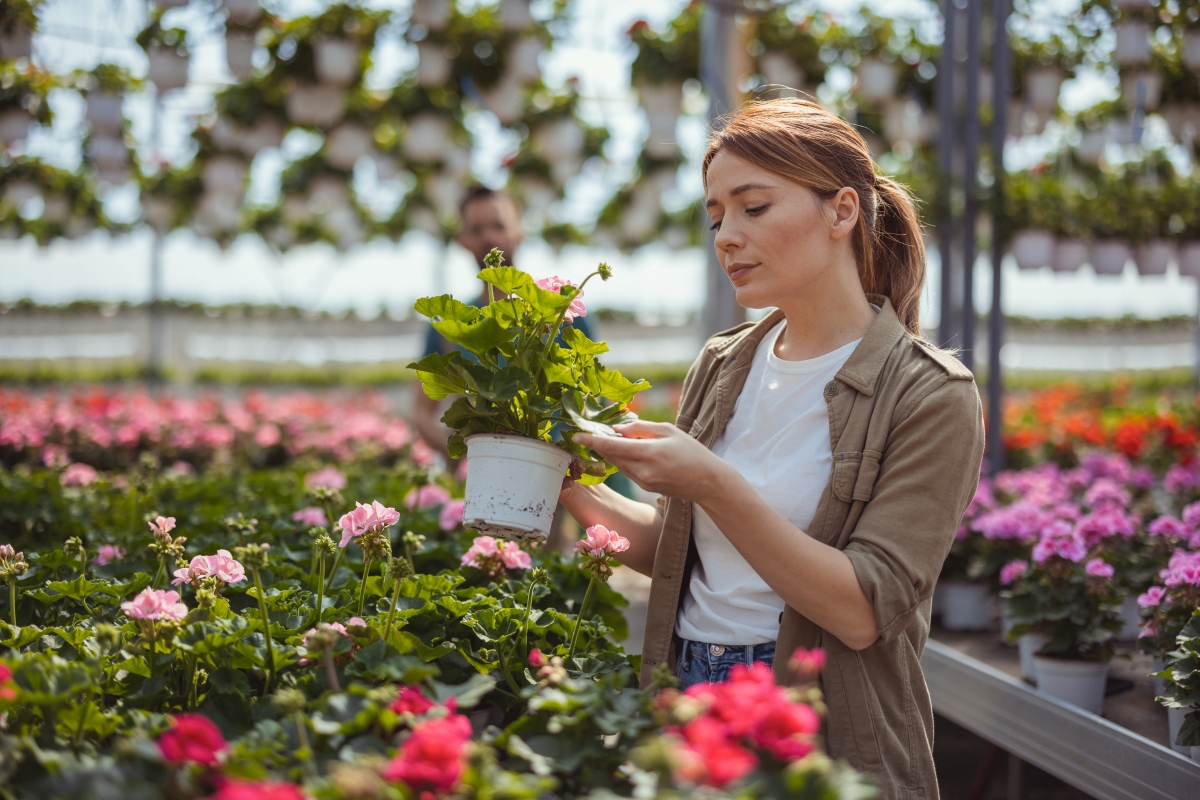We may earn revenue from the products available on this page and participate in affiliate programs. Learn More ›
By the time July rolls around, many gardeners struggle to keep their plants hydrated and healthy while others have only a month or two left in their growing season. Fewer people purchase plants this time of year, too, so business owners often offer deep discounts to clear out their inventory. You can score some really great deals on flowers and other plants that you may have been eyeing all season, along with a few new discoveries.
However, before you rush off to your local nursery, there are a few things you should know about gardening late in the season. We reached out to Marc Mbida, the owner of Lush Turf & Outdoor Services LLC, a landscaping and lawn care company in Gaithersburg, Maryland, to learn more about outdoor plant care in July. While he generally recommends against “planting in the middle to late summer, especially when we get extreme heat waves and droughts,” he shared some guidance with us about the best plants to look for along with tips to help them survive the height of summer.

Look for these flowers and shrubs at your local nursery.
The best flowers and bushes to look for can vary depending on your climate. If you are in a warmer area, look for heat tolerant plants to give them the greatest chance of survival. “As a landscaper I would suggest plants such as liriopes, canna lilies, or vincas as they do pretty well in very hot conditions,” says Marc.
A few other flowers to consider include:
- Sunflower
- Marigold
- Zinnia
- Lantana
- California poppy
- Alyssum
- Cosmos
- Pentas
- Red yucca
If you’re looking for a shrub, Marc, who lives in Hardiness Zone 7, says, “A lot of my clients like the golden euonymus. It stays yellow and green year-round.” Whether you’re purchasing flowers, bushes, or other plants, he says, “Always read the labels, as they will provide you with important information about the plants.”
You may also find success with these herbs and vegetables.
When you’re looking for what to plant in July, you could also explore herb and vegetable options. With proper care, fast-growing herbs, such as basil, oregano, rosemary, cilantro, sage, and parsley can be planted in mid-summer, depending on where you live. If you can’t find any young plants at your local garden center, you could also pick up a few seed packets since these herbs don’t take long to sprout.
Depending on your Zone, you may also be able to plant and grow a few vegetables in July. Some options include carrots, cauliflower, cucumbers, pumpkins, squash, and tomatoes.
Some plants aren’t worth wasting your time or money on in July.
It is important to do some research before purchasing any flowers, herbs, shrubs, or vegetables. You’ll need to learn more about the ideal growing conditions, along with the conditions in which the plant is unlikely to survive. The plants you should avoid will vary depending on which Zone you live in.
For example, most tomato varieties won’t set fruit if they are grown in temperatures above 90 degrees Fahrenheit. They may only be a viable option if you live in a cooler region. Lettuce is another vegetable that you may want to pass up in July. The ideal temperature range for growing it is between 45 and 75 degrees Fahrenheit. When grown in hotter climates, the leaves bolt, or send up flower shoots. This gives them a bitter and unpleasant taste.
Inspect each plant in person before making a purchase.
If you are going to purchase any plants in July, you’re best doing so in person. Marc recommends performing a close inspection before making a purchase. Look for any signs of damage or stress that could decrease the plant’s chances of survival in an already less-than-ideal growing situation. “Obvious signs could be the wilting of leaves/petals, plants look dry, white spots, and plant drooping,” says Marc.

Other tips for planting in July.
As we’ve already shared, July doesn’t offer optimal growing conditions for many gardeners. You’ll have to be willing to put in some extra time and effort. Below are a few pointers for gardening in extreme heat:
- Water, water, water, and then water again: According to Marc, you should be prepared to water your plants a minimum of twice a day, 4 or 5 days each week. He explains, “Planting a new bush/shrub/flower is a process where you are bringing a root system that has been kept in a plastic container or burlap bag, and you are expecting the new planting’s root system to establish in a new environment with frequent watering.”
- Know when to water: Avoid watering during the afternoon when the high sun will cause the water to evaporate quickly. Instead, water in the morning. This way, the water will be able to soak in and reach the roots before it all evaporates.
- Mulch your garden beds: Mulch can help prevent all the water from evaporating from the soil, while also minimizing invasive weeds.
- Don’t skip the fertilizer: Fertilizing is also important when planting in July. “A lot of people make the mistake of thinking that just planting and watering is enough,” Marc says. “Truth is, you have to fertilize and continually water.”
- Stay on top of weeding: Remove weeds promptly to give the plants in the garden ample space to ensure proper air circulation.


